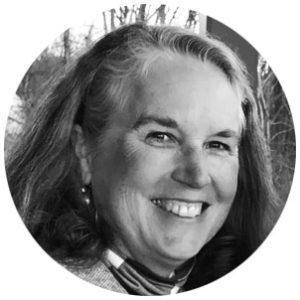STEPHANIE HUBACH | CONTRIBUTOR
Upon picking my son Tim up from work one night, enclosed with his paycheck was a paper reminding employees of the company dress code at the grocery store where he works. (In his role there, we affectionately refer to him as “Cart Man.”) As I perused it, Tim asked me what it said. Reading it out loud, I quoted, “Hair of male employees shall be neatly trimmed and groomed.” To which Tim blurted out, in his jovial way, “What am I? A PET??” This type of wry humor has been characteristic of Tim for most of his teen and adult life. But not all of it.
Have you ever seen the film Where Hope Grows, or do you watch Born This Way, or do you remember the TV series Life Goes On? If so, you likely have a positive picture of people with Down syndrome and their quality of life in the world. I am really thankful for that. I am deeply grateful for advocates in the generations before and during my son’s lifetime who have invested to create a more open society, a better public education system, and improved living conditions for people with Down syndrome (DS). A lot of social progress has been made for people with DS in the last several decades. If you are blessed enough to know someone with DS personally, you likely also have been embraced by a person who is frequently open-hearted to others, forgives easily, laughs heartily, worships joyfully, and dances freely. The ways in which many people with Down syndrome excel in life as image-bearers of the Living God can take my breath away at times. Many of them reflect God’s character into the world in stunning ways. My 31-year-old son Tim, who has Down syndrome, can be like that. But if we only characterize people by the successes we have made as a society on their behalf, or the ways in which their functioning is admirable, we miss the fuller picture of who they—and we—are as human beings.
The Functional and Social Dimensions of Disability
Disability can be characterized as having both a functional aspect and a social aspect. The functional aspect is the part of the body that doesn’t work the way we expect it to. In DS, this involves possessing an extra copy of the twenty-first chromosome. (Hence the medical name for Down syndrome: Trisomy 21.) This extra bit of chromosomal material creates a vast array of complications in learning, in communication, in the immune system, in heart health, and in digestive health—to name a few. The functional aspects of disability cry out for merciful engagement from others. I like to rely on the definition of mercy that was posited by St. Gregory of Nyssa—that “mercy is a voluntary sorrow which enjoins itself with the suffering of another.” While most people with DS would not describe their lives as being characterized by suffering, in my personal experience, most people I know with Down syndrome would acknowledge that their extra chromosome does present genuine challenges in their daily functioning in the world.
On the other hand, the social dimensions of disability have to do with the ways in which a person is disabled—often much further than the impairment itself—by the way we treat them. Ways that diminish their humanity. Ways that reject their involvement. Ways that separate, subjugate, or stifle. The social aspects of disability cry out for justice. Justice is needed wherever injustice reigns. Injustice can be defined as “the holding down of another through the use of power that is immoral or inequitable.” In contrast, justice is “the appropriate use of power to do what is right and fair.” People with DS are deeply wounded by injustice when opportunities for meaningful employment are withheld from them, when they are marginalized in communities, or when their voices are not respected—to name a few.
Down Syndrome Regression Disorder
One of the most heartfelt cries for mercy that come from the Down syndrome community is precipitated by an unfamiliar condition. In fact, most people—including younger families with children with Down syndrome—have likely never even heard of it. It is a cry for relief from what is known as Down Syndrome Regression Disorder (DSRD). DSRD is described by the National Institutes of Health (NIH) as “a clinical entity that is characterized by a loss of previously acquired adaptive, cognitive, and social functioning in persons with DS usually in adolescence to early adulthood.”[i] In other words, during the teen years or early adulthood, approximately 20% of people with Down syndrome lose ground—often significant ground—that has been gained through decades of hard work in early intervention and specialized education. This loss of functioning (regression) can be so dramatic as to render a person with DS unable to speak, unable to perform basic self-care, and inundate them with a deep sense of distress. The propensity to relationships full of open-heartedness, easy laughter, and joyful dancing essentially evaporates.
The Cause and Treatments of DSRD
While the mechanism is not fully understood, DSRD almost always follows a traumatic event in the life of a person with Down syndrome. People with DS have been described in one research article as “exquisitely sensitive,”[ii] so that events which may not be experienced as traumatic by a typical person (for example, a sibling leaving for college) may be deeply traumatizing to a person with DS. Since people with DS possess some level of difficulty with adaptive skills and limitations in describing mental or emotional distress under the best of circumstances, this type of trauma can simply plunge someone with DS (who has begun to regress in these areas) to descend into a mere shadow of their former selves.
As the specific underlying causes of DSRD are not clearly understood, the treatments modalities for DSRD are varied. One of the greatest tragedies is that, while a variety of options do exist that can bring relief to people with DS who experience this condition, specialists are difficult to find, and insurance coverage for procedures can be challenging to obtain. This is an issue pertaining not to mercy, but to justice. People with DS who suffer from DSRD can at least partially recover with proper treatment, however, it often takes families years to find that treatment. Years. Can you imagine watching your teen or adult child, into whom you have poured your life’s energy and family’s love through years of therapy and support—simply disappear before your eyes? Can you imagine the sense of loss that people with DS and their families experience when, on the cusp of adulthood, they find themselves completely undone by a mysterious condition that unravels their hopes and dreams? How can we help?
How Can We Help?
- Don’t assume that once a family with a child with DS gets past the possible health hazards of DS in early childhood (for example: heart conditions, leukemia, and respiratory illnesses) that they are on a smooth medical pathway. DSRD is not simply a bumpy ride into adulthood, it more akin to sliding off a cliff. And it is devastating. Stay in touch with people with DS and their families throughout the lifespan of the person with Down syndrome. If you see changes in a teen or young adult friend with DS, don’t hesitate to ask their parents about it.
When my son Tim went through regression, he slid so slowly and steadily that—like “the frog in the kettle”—we didn’t fully recognize the degree of the changes at first. It took the honest observations of my older son and daughter-in-law (who see Tim less frequently) for my husband and me to step back and see how much Tim’s skills and mental health were diminishing. One of the most notable signs was that he lost the sense of humor he usually possessed. In addition, he could no longer organize himself, his self-talk (which is typical for people with DS) dramatically increased, he socially withdrew into his own world, and he developed both vocal and movement tics. Thankfully, once we could see what was happening, Tim received prompt and effective treatment by a qualified DS specialist. With the exception of entrenched stuttering, he has almost fully recovered from DSRD. As the TSA posters say in the airport, “If you see something, say something.”
- If you know a family whose teen or adult with DS is in the throes of DSRD, come alongside and ask the parents, “How can I help?” They may ask you to help watch their teen/adult child so that they can take a break from caregiving. They may ask you to listen as they pour out their hearts in angst over the losses they are experiencing or the frustrations they are encountering in finding restorative health care. They may ask you to help them research the options that exist so that they might access treatments and the doctors who provide them.
- If you are a medical professional, remember the Down syndrome community in your practice and in your research. People with Down syndrome are “fearfully and wonderfully made (Ps. 139:14)” and just as deserving of good health care as anyone else. Be an advocate for people with DS within the medical community, where the view of people with DS can still be decidedly prejudiced in many circles.
Isaiah 58:10 says, “If you pour yourself out for the hungry and satisfy the desire of the afflicted, then shall your light rise in the darkness and your gloom be as the noonday.” People with Down syndrome who suffer from DSRD are truly among “the afflicted.” May our “light rise” in support for them and their families—in deeds of mercy and acts of justice—such that Jesus’ words can be said of us: “…let your light so shine before others, so that they may see your good works and give glory to your Father who is in heaven (Matt. 5:16).
[i] https://pubmed.ncbi.nlm.nih.gov/32471843/
[ii] https://www.mdsc.org/event?show=date&date=1637020800
Photo by Nathan Anderson on Unsplash

Stephanie Hubach
Stephanie O. Hubach is a Research Fellow in Disability Ministries in affiliation with Covenant Theological Seminary. From 2007-2016 she served as the Founding Director of Mission to North America’s Special Needs Ministries (Presbyterian Church in America). She is also a founding member of the Lancaster Christian Council on Disability (LCCD). Steph is the author of Parenting & Disabilities: Abiding in God’s Presence (P&R Publishing, 2021), Same Lake, Different Boat: Coming Alongside People Touched by Disability (P&R Publishing, 2006, Revised & Expanded Edition 2020), and All Things Possible: Calling Your Church Leadership to Disability Ministry (Joni and Friends, 2007). She has been published in ByFaith magazine, Focus on the Family magazine, and Breakpoint online magazine and produced a Christian Education DVD series based on Same Lake, Different Boat. Steph and her husband have two deeply loved sons, the younger of whom has Down syndrome. For further information on her work, go to www.stephaniehubach.com.

